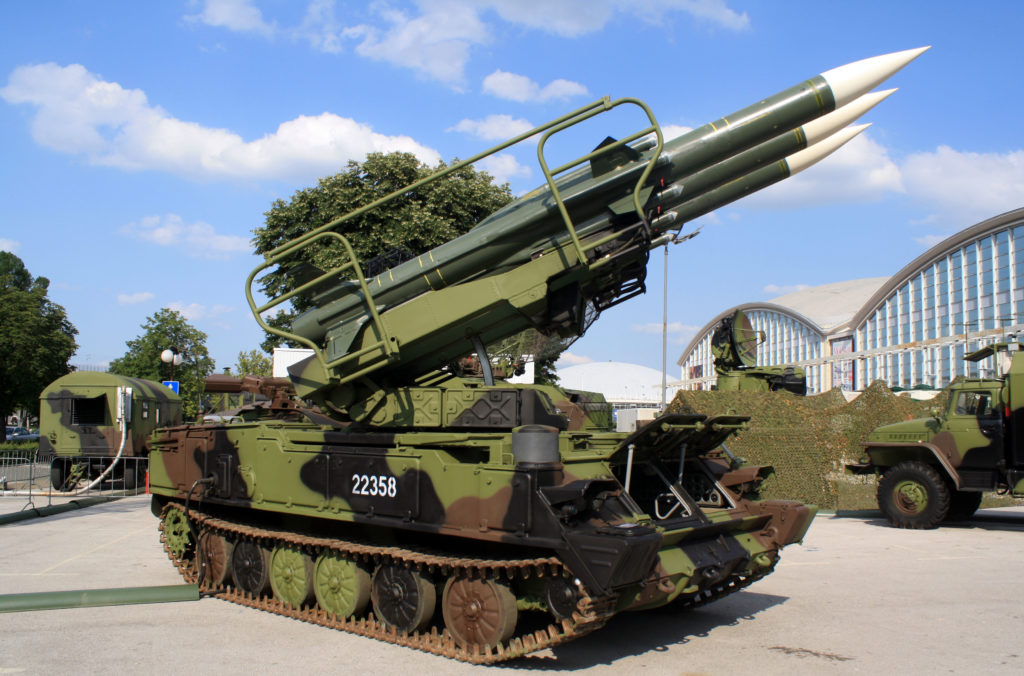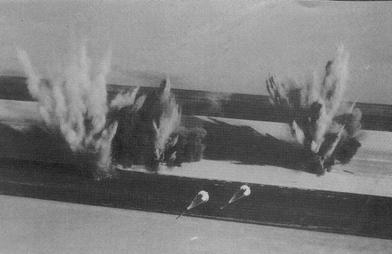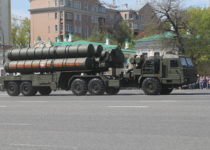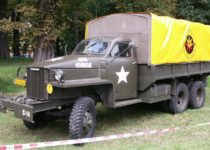The 2K12 Kub Air Defense System: The Three Fingers of Death With A Colorful History

The story of the 2K12 Kub (called SA-6 Gainful by NATO) air defense system has some lessons to teach. It shows how training and tactics can make all the difference regardless of what weapon you have in your hands, and how discovering secrets of a system’s working can turn it from a feared beast into a sitting duck.
Also known by its more menacing nickname the ‘three fingers of death’ due to the three missiles that its launcher conspicuously carries, 2K12 Kub is a medium range surface to air missile (SAM) system that is designed from the outset to be highly mobile, with all its components, including the missile launchers and the radar, being on top of tracked vehicles. In many ways, it can be considered the forebear of the Russian Buk, Indian Akash and Iranian Raad systems.
Inception
The story begins in the July of 1958 in what was then the Soviet Union. Surface to air missiles had already come of age, with the US deploying Nike Ajax in 1954 and the Soviets deploying S-75 Dvina (NATO name SA-2 Guideline) in 1957. But those were stationary missile systems. A truck towed the missile to the place of installation, where it was set up to stay fixed, waiting for command that would send it on its supersonic flight towards its target. The downside with fixed systems though, is that once you locate them, you can easily plan a mission to take them out, as you know that they will be staying there.
In 1958, the CPSU central committee in the USSR issued a request for a system with a set of features. These were the ability to engage aerial targets flying at speeds between 420 and 600 m/s, ability to engage aerial targets at altitudes between 100 and 7000 metres, ability to engage aerial targets at ranges up to 20 km, a single shot kill probability of at least 0.7, and high mobility. Following this, the Tikhomirov Scientific Research Institute of Instrument Design (NIIP) got to work. After a series of trials and errors that characterise any development program, Kub achieved a major milestone on 18 February, 1963, when it successfully shot down an Ilyushin Il-28 bomber that had been converted into a target drone.
It finally entered service and went into production on 23 January, 1967. That same year, it was also recommended for modernization to improve range, electronic counter countermeasures, reaction time and reliability. This and subsequent modernization produced a handful of variants over time, named Kub M1, M3 and M4. From here, the Kub would embark on a colorful journey spanning many conflicts over different continents.
A version of 2K12 that uses the relatively more advanced missiles is called Kavadrat. In Russian, this literally means ‘square’. This comes from the fact that a 2K12 battery consists of four launchers and one radar vehicle and traditionally, the four launchers are placed at the four corners of an imaginary square with the radar vehicle at its center. On a related note, Kub means ‘cube’ in Russian. But I am not sure what this signifies. The Kavadrat missile also involved an innovative design for its time. After it burned through its first stage fuel during flight, its empty fuel chamber acted as a combustion chamber for its second stage ramjet engine.
Yom Kippur War
Kub made its debut in the 1973 Yom Kippur war. Egypt and Syria were not in a good place in those years. Much of their air force had been wiped out by the much smaller Israeli air force in a preemptive strike in the 6 day war in 1967. Most of those aircraft had been destroyed while still on ground, before they even got a chance to make a difference in the war. All of Sinai to the east of Suez canal, west bank and Golan heights were now under Israeli control. This humiliating defeat of multiple Arab nations by the much smaller Israel had led to demands for a second attack for redemption by public in Egypt, Syria and Jordan.
And their governments had a plan. The Israelis were sure they won’t face a threat from these countries in near future. After all, with their air forces gone, Israelis enjoyed complete air superiority over them. Or so they thought. The coming war was to prove that you don’t need an air force to deny air superiority to your adversary. Egypt’s game plan was to carry out a sneak attack on Israeli forces stationed to the east of Suez canal with ground troops. And these troops would be shielded from Israeli warplanes by a SAM umbrella provided by the older S-75 Dvina and S-125 Neva, and the newly acquired 2K12 Kub.
Kub had a few advantages over S-75 and S-125. Firstly, its low altitude performance was better, reducing for the enemy aircraft the advantage of nap of earth or low altitude approach once it was detected by radar. Secondly, it was mobile, making it more survivable. Thirdly, and this would become apparent to Israelis later, the radar warning receivers on Israeli aircraft at that time were incapable of detecting the emissions of radar used by Kub.
The war came as a shock to the Israelis. The Egyptian ground forces, under the guise of routine exercises, had quietly massed up on the west bank of Suez canal. And on 6 October 1973, they quickly crossed the canal and captured Israeli posts on the other side. The sand barriers that the Israelis had setup were washed away using water from the canal, clearing the way for Egyptian tanks to enter the battlefield. In the coming days, several Israeli aircraft would be lost to the Egyptian SAM umbrella guarding these ground forces. The Syrian Kub batteries similarly gave a tough fight to Israeli aircraft.
In total, by most conservative estimates, at least 40 Israeli aircraft, mostly A4 Skyhawks and some F4 Phantoms, are believed to have been shot down by Egyptian and Syrian SAMs. And these were just the aircraft shot down. If aircraft that were hit by SAMs but made their way back to base safely are included, the number was far higher. And Kub would be credited as the most effective air defence system used in the war.
The tide of war eventually turned in Israel’s favour though. The Egyptians made the mistake of chasing the Israeli tanks beyond the range of the SAM umbrella, where Israeli aircraft decimated them. Israeli ground forces eventually broke through Egyptian lines and destroyed the SAM batteries, including the Kubs, allowing Israeli air force to operate freely. The war ended two weeks and 5 days later with Israeli victory. But the experience with SAMs left a lasting impression on the Israeli military’s thinking, and eventually played a role in evolution of an effective counter strategy against air defenses using suicide drones.
Operation Mole Cricket 19

In 1982, open hostilities broke out between Israel and Lebanon over repeated attacks on Israeli forces by Palestinian Liberation Organisation. By this time, Syria had set up an extensive air defence system in Bekaa valley in Lebanon, of which the 2K12 formed a significant part. But Israel was ready this time. Since Yom Kippur war, Israel had had ample time to come up with an effective strategy against integrated air defence systems. It involved using drones like Scout and Mastiff. These drones were cheap enough to be produced in large numbers, which made them expendable. They would enter enemy airspace in large numbers and act as baits for enemy air defense systems.
When these air defenses would turn on their radars to target these drones, they would be located by Israeli manned fighters that would launch anti-radiation missiles against them. What helped more is that by now, Israelis had modified their radar warning receivers to easily detect the emissions of 2K12’s radar. The war began and the strategy worked fabulously. The ease and speed with which Syrian air defenses were wiped out was such that the whole episode would become known as the Bekaa valley turkey shoot.
Chadian–Libyan conflict
Israel would go on to develop even more potent drones like Harpy and Harop. Unlike earlier drones like Scout and Mastif, which helped locate enemy air defenses so that manned combat aircraft could launch missiles on them, these new drones were suicide drones. After detecting the radar emissions of enemy air defenses and locating them, they would themselves crash into the air defenses. There are also more sophesticated combat drones called unmanned wingmen, that in future could escort crewed aircraft and confuse the enemy air defenses. You can read more about them in this post of mine.
Meanwhile, 2K12 tasted more defeats in the war between Libya and Chad. In that conflict, Martel anti-radiation missiles fired by French Jaguars destroyed a Libyan 2K12 radar site. But another development in this war proved far more catastrophic for 2K12 in the long run. The Chadian rebels against which Libya was fighting eventually captured Ouadi Doum air base operated by Libyan forces, with most of its equipment, including 2K12 batteries, intact. Some of these captured 2K12 batteries were appropriated by Chadian forces, and some were taken to France and the United States for study.
The Libyan military sent its Tu22B bombers to destroy any equipment left in the bases abandoned by them that could be used by Chadian forces. One of these Tu-22Bs was shot down by a Libyan 2K12 battery captured by Chadian forces. But it was the 2K12s sent to the US and France that would prove to be truly devastating for Libya. These captured 2K12s were extensively studied in the west, and the secrets they spilled out were used to develop effective counter measures against 2K12. This is very likely the reason why 2K12 completely failed to defend against NATO air strikes against Libyan forces during the civil war there in 2011, which killed Muammar Gaddafi led to regime change.
This shows why governments go to great lengths to prevent their adversaries from getting access to their weapon systems. A weapon system’s potency depends not just on how advanced the system itself is, but also on how unknown its methods are to the adversary. When viewed in this context it becomes obvious why the US is willing to kick Turkey out of F-35 program just because its buying S-400 from Russia, that could be used to find details about F-35 that could compromise its potency.
The US itself has gone to great lengths to get its hands on Soviet equipment to study it. This includes the Mig-25 belonging to a Soviet pilot who flew it to Japan to defect from the Soviet Union, buying S-300 systems from Greece, buying Mig-29s from Germany after its unification, and using Chinooks to lift Mi-24 helicopters from captured Libyan bases after the Libyan-Chad conflict. In the video below, a skeet carried by BLU-108 submunition of the CBU-97 sensor fused cluster bomb is being tested for its ability to recognize specific targets using its laser and infrared sensors.
You can see it recognising several captured or otherwise procured weapon systems of Soviet origin, including a 2K12 launcher and radar, which in the video is referred to by its NATO name SA-6. It is very likely one of the Libyan 2K12s captured during the conflict with Chad. But even after it had been extensively studied by the west from captured Libyan examples, 2K12 still had a lot of potential left in it. It just needed to be in skilled hands. This was demonstrated during the Balkan wars.
Balkan Wars
In that conflict, an American F-16 flown by Scott O’ Grady was shot down by a Serbian 2K12 battery. You can read more about that conflict in this post of mine. Below is an excerpt from that post describing this particular incident in detail.
“Another US warplane shot down by the Serbs was an F-16 piloted by Scott O’ Grady. In this case, the Serbian commander was operating the 2K12 Kub air defense system, which is far more mobile and therefore even harder to locate than systems like S-125. In this case too, similar tactics were utilized to ambush the aircraft. The Serbian commander knew that if he kept the radar on for a long time, the radar’s location would be found out by the NATO planes and a HARM would soon be on its way. But if he kept the radar on for a very short amount of time, then the missiles could not be guided to their target through out their journey.
So he switched on the radar for a very brief period. This prevented the NATO aircraft from calculating the location of the radar, even though O’Grady was able to detect the radar’s emissions. From this brief period of illumination, the commander was able to know the altitude, speed and direction of the F-16. Based on this information, he pointed the missiles at the region where the F-16 would likely be after a particular interval of time, and fired two missiles towards that region with the radar turned off.
In absence of radar guidance, the missiles flew towards the direction in which they were fired using inertial guidance. And O’Grady had no clew they were coming as they did not have an onboard radar whose emissions could be detected. Then, just around 5 seconds before the missiles reached the region where the F-16 was supposed to reach at the same time, the commander of the 2K12 unit switched back on the radar.
The radar return of the F16 was immediately picked up by the missiles and they flew towards it. As O’ Grady performed evasive maneuvers, one of the missiles exploded between him and another F-16 flying alongside, while the other one detonated right next to the F-16 being flown by O’Grady, sending it crashing down. Like in case of Zelko, O’ Grady too was able to eject and survived. He too evaded capture by the Serbian search parties and was rescued by a US combat search and rescue team later.”
This incident shows that even weapons on the cusp of obsolescence, that have been thoroughly studied by the adversary, can be a serious threat in trained hands. The Kub air defense system is quite old now, and is being replaced around the world. It has, however, been the precursor to other, more modern mobile air defense systems like the Russian Buk, the Indian Akash (whose missiles bear striking resemblance to those of the Kub), and the Iranian Raad.
Conclusion
The 2k12 Kub, therefore, is one of the very first air defense systems that was mobile enough to move around with armored formations, which not only made it more operationally flexible, but also more survivable. And it was put to good use in Egypt and Serbia. With time though, the west developed enough understanding of it, from observing their adversary’s use of it as well as by studying captured examples, that it failed to be a credible threat in conflicts in Lebanon and Libya. The Iraqis also failed to take advantage of it because they did not use it as the highly mobile system that it was designed to be.
But the Kub’s design philosophy can be seen in many of the later air defense systems like Akash, Buk and Raad, which shows the continuing utility of this class of air defense systems in the modern battlefield. They are in a way somewhere in between the extremes of long range area defense systems like the S-400, and the VSORADS (Very Short Range Air Defense Systems) like the Pantsir, Shilka, Tunguska and Biho.



